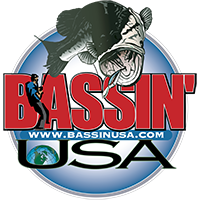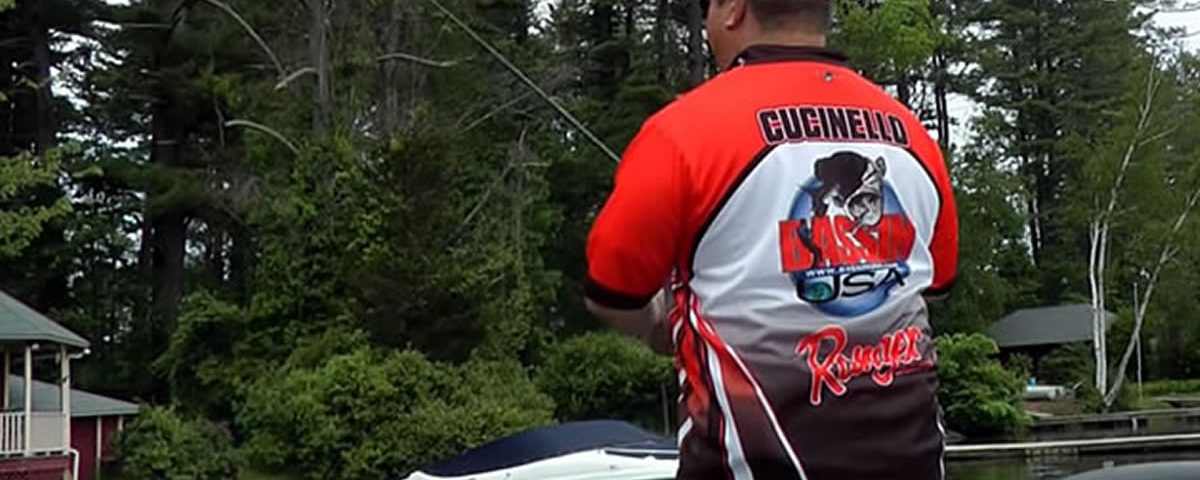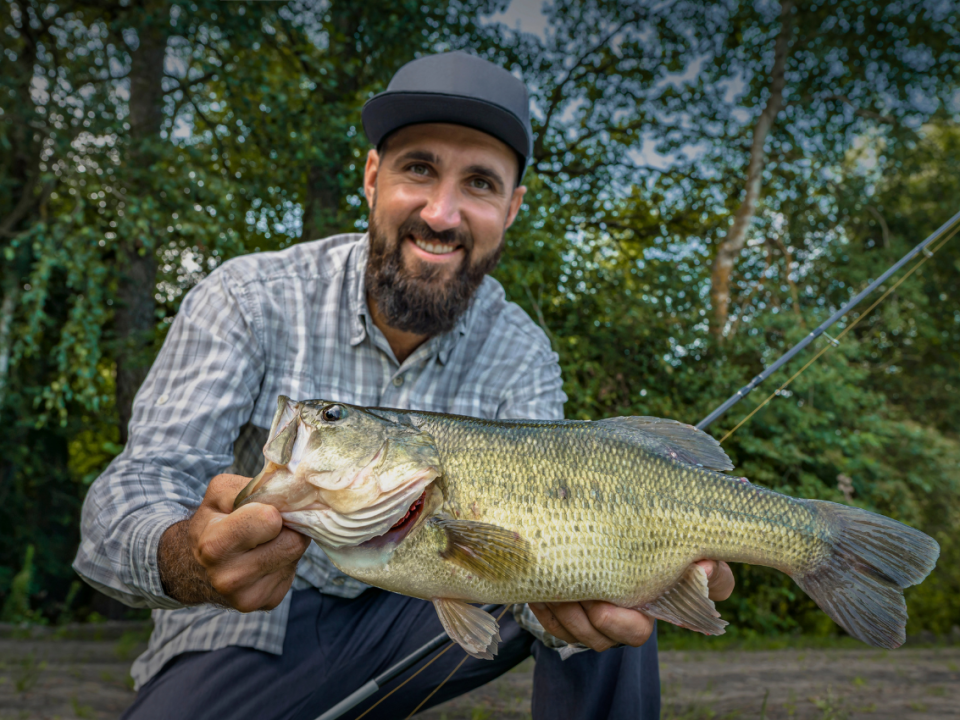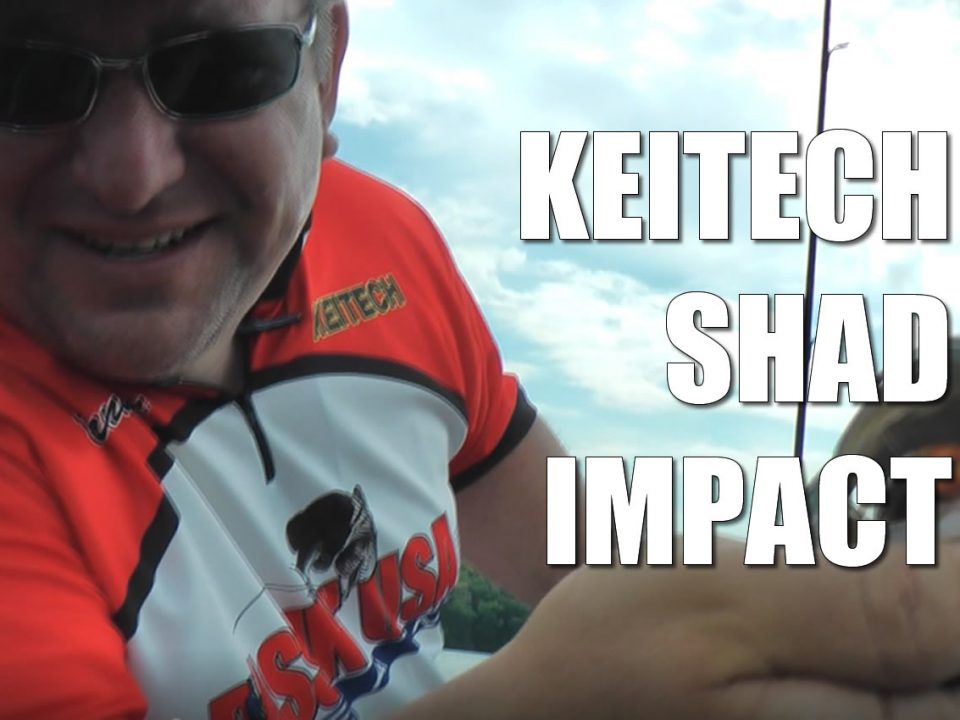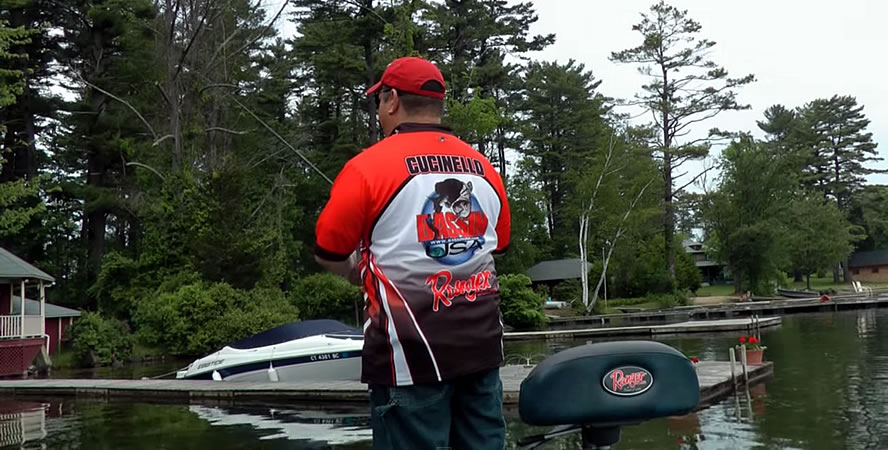
This step by step instructional guide will break down the different components that are used to make a drop shot rig and explain why, when and where you would use them. The drop shot is a rig that every bass fisherman should know how to tie and fish. It is truly one of the greatest fishing techniques ever invented. There are many different ways to make a drop shot rig. If you are not familiar with drop shotting, the basic concept is to allow you to suspend a soft plastic lure while maintaining contact with the bottom.
It’s rigged with the lure tied above the weight allowing you to shake, quiver or dead-stick your lure while keeping it in the strike zone. It can be extremely effective at times and can be used pretty much all year round (depending upon where you live).
In an effort to keep it simple, let’s break down the Drop Shot fishing technique into two categories:
1) Finesse Drop Shot (SMALL)
 In bass fishing the word “finesse” is associated with light line, small hooks, light weights and small lures. This holds true for the Drop Shot rig as well, but I have noticed one variable that you typically would not see in a finesse technique, “the weight of the sinker”. You can use a heavier sinker (up to ½ oz or more) and still make a finesse presentation, because the sinker is attached below the lure. Here are some basic guidelines that you can follow for finesse rigging:
In bass fishing the word “finesse” is associated with light line, small hooks, light weights and small lures. This holds true for the Drop Shot rig as well, but I have noticed one variable that you typically would not see in a finesse technique, “the weight of the sinker”. You can use a heavier sinker (up to ½ oz or more) and still make a finesse presentation, because the sinker is attached below the lure. Here are some basic guidelines that you can follow for finesse rigging:
Hook Sizes: #8 – #1 (Drop Shot Hook)
Line Sizes: 4 – 8 lbs test (Fluorocarbon or Monofilament)
Sinker Sizes: 1/8 – ½ ounce (Various Styles)
Lure Sizes: 1” – 4” (Finesse Soft Plastic Lures)
2) Power Drop Shot (BIG)
 If you’ve heard the term “Power Fishing”, you’ll know what I’m talking about with the “Power Drop Shot”. Simply stated Power Drop Shots are used for extracting fish from areas that require heavier tackle. This technique can be used for presenting the Drop Shot into heavy weeds, brush, docks, etc. Here are some basic guidelines that you can follow for power rigging:
If you’ve heard the term “Power Fishing”, you’ll know what I’m talking about with the “Power Drop Shot”. Simply stated Power Drop Shots are used for extracting fish from areas that require heavier tackle. This technique can be used for presenting the Drop Shot into heavy weeds, brush, docks, etc. Here are some basic guidelines that you can follow for power rigging:
Hook Sizes: 1/0 or greater (Preferred Hook Style)
Line Sizes: 10 – 17 lbs test (Fluorocarbon or Monofilament)
Sinker Sizes: ½ – 1 ½ ounce (Various Styles)
Lure Sizes: 4″ + (Soft Plastic Lures)
There are several different ways that you can setup a Drop Shot rig. These days’ manufacturers are making it really easy for us to choose the right tackle for the job by naming their products after specific bass fishing techniques. The most common setup you will find uses a “drop shot hook” and a “drop shot weight” secured to your fishing line. Sounds pretty simple, right? So let’s go over some of the components used for making a Drop Shot rig in a little more detail. I will also give some examples of different Drop Shot setups that can be used for both categories I mentioned above (Finesse & Power Drop Shot).
HOOKS STYLES BY CATEGORY:
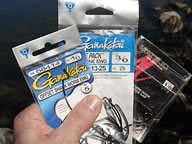 FINESSE DROP SHOT HOOKS:
FINESSE DROP SHOT HOOKS:
Drop Shot Hook
Octopus Hook
Personal Favorite; Gamakatsu Drop Shot Hook, Size #4
POWER DROP SHOT HOOKS
Octopus Hook
Offset Worm Hook (J-Bend)
Extra Wide Gap Worm Hook
Personal Favorite; Gamakatsu EWG (Extra Wide Gap) Hook, Size 3/0
I highly recommend reading our “Captain Hook Article” for some great advice on hook selection.
LINE STYLES BY CATEGORY:
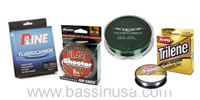 FINESSE DROP SHOT LINE:
FINESSE DROP SHOT LINE:
Fluorocarbon
Monofilament
Copolymer
Personal Favorite; Sunline Fluorocarbon, 6 lb Test
POWER DROP SHOT LINE:
Fluorocarbon
Monofilament
Copolymer
Personal Favorite; Berkley 100% Fluorcarbon, 12 lb Test
SINKER/WEIGHT STYLES (EITHER CATEGORY):
 Drop Shot Weight – Round Ball
Drop Shot Weight – Round Ball
Drop Shot Weight – Cylinder
Standard Sinkers – Egg or Oval with rubber core
Cylinder and Mojo weights
Split Shot Weights
Brass & Glass Combo – CLICK HERE FOR DIAGRAM
Personal Favorite for Finesse; Drop Shot Weight Round Ball
Personal Favorite for Power; Brass & Glass Weight Combination or Cylinder Weight (for fishing rock & weed)
KNOTS BY CATEGORY:
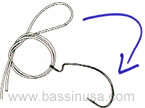 FINESSE DROP SHOT KNOT
FINESSE DROP SHOT KNOT
Palomar Knot (modified)
Personal Favorite; Palomar Knot (Modified)
POWER DROP SHOT KNOTS:
Palomar Knot (modified)
Drop Loop (modified)
Personal Favorite; Drop Loop (Modified)
Helpful Video Tips:
CAPTAIN HOOK ARTICLE – BASSIN’ USA PROSTAFF
SOFT PLASTIC LURE BY CATEGORY:
This is the one place you can really get creative. The sky is the limit here. As always conditions should dictate what lure size, shape and color you choose. If you don’t want to be bothered with all the little details and would like some general recommendations, here are a few of my personal favorites by category.
PERSONAL FAVORITE DROP SHOT LURES – FINESSE:
Berkley Gulp Minnow, Size 3″, Colors – Emerald Shiner & Chartreuse Shad
Yamamoto Shad Shape Worm, Size 4″, Colors – Baby Bass & Watermelon Black Flake
Yamamoto Kut Tail Worm, Size 3.5″ & 4″, Colors – Watermelon Black Flake, Green Pumpkin Black Flake & June Bug Purple w/ Emerald Flake
PERSONAL FAVORITE DROP SHOT LURES – POWER:
Zoom Brush Hog, Size 5″, Colors – Green Pumpkin & Black
Lake Fork Craw Tube, Size 4″, Colors – Blue Bruiser & Watermelon
Berkley Power Worm, Size 7″, Colors – Black & Motor Oil
Zoom Centipede, Size 4″, Colors – Cotton Candy & Watermelon Seed
Yamamoto Senko, Size 5″, Colors – Watermelon Black Flake, Black Blue Flake
PERSONAL FAVORITE DROP SHOT SETUPS
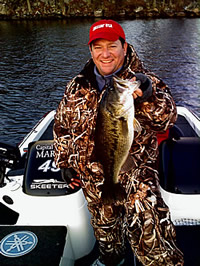 So if you go down the list above and group everything in my personal favorites together from their respective categories, my Drop Shot setups would look something like this:
So if you go down the list above and group everything in my personal favorites together from their respective categories, my Drop Shot setups would look something like this:
TYPICAL FINESSE DROP SHOT SETUP
Sunline Fluorocarbon, 6 lb Test
Gamakatsu Drop Shot Hook, Size #4
Tied with a Palomar Knot (Modified)
Drop Shot Weight Round Ball (1/8 to 3/8 oz depending on depth and conditions)
Nose Hooked with one of the following lures:
Berkley Gulp Minnow, Size 3″, Colors – Emerald Shiner & Chartreuse Shad
Yamamoto Shad Shape Worm, Size 4″, Colors – Baby Bass & Watermelon Black Flake
Yamamoto Kut Tail Worm, Size 3.5″ & 4″, Colors – Watermelon Black Flake, Green Pumpkin Black Flake & June Bug Purple w/ Emerald Flake
Match this up with your favorite drop shot rod and reel spinning combo and you’re ready to go Finesse Drop Shotting.
TYPICAL POWER DROP SHOT SETUP
Berkley Big Game (Low-Vis Green) Monofilament, 12 lb Test
Gamakatsu EWG (Extra Wide Gap) Hook, Size 3/0
Tied with a Drop Loop (Modified)
Brass & Glass Weight Combination or Cylinder Weight (for fishing weed)
Texas Rigged with one of the following lures:
Zoom Brush Hog, Size 5″, Colors – Green Pumpkin & Black
Lake Fork Craw Tube, Size 4″, Colors – Blue Bruiser & Watermelon
Berkley Power Worm, Size 7″, Colors – Black & Motor Oil
Zoom Centipede, Size 4″, Colors – Cotton Candy & Watermelon Seed
Yamamoto Senko, Size 5″, Colors – Watermelon Black Flake, Black Blue Flake
Match this up with your favorite worm/jig rod and reel combo(spinning or bait-casting) and you’re ready to go Power Drop Shotting.
THE BIG QUESTION
Q) How much line should there be between the hook and the weight when I tie a typical Drop Shot Rig?
A) It truly depends on the circumstance (I hate that answer, but it’s the truth). What I can offer are some good starting points and some things to consider. In general 18″ -20″ from the hook to the weight will get the job done in most cases. If you talk to guys that drop shot a lot, you might find that they like to leave extra line trailing from the weight so they can increase the length if needed (shortening the length is easy). I personally have used as little as 8 inches from the weight to the hook and as much as 5 feet. There was always a good reason why one was preferred over another. If you are fishing with a buddy, you can both start with different lengths and see who gets more strikes. One person sets up at 12″ with extra line trailing from the weight (just in case) and the other sets up at 24″. One will usually outperform the other. Then make the adjustment so that both people are using the same length Drop Shot Rig. It is rare that you will need to be exactly to the inch with your setup.
HOW TO FISH A DROP SHOT RIG SIMPLYFIED
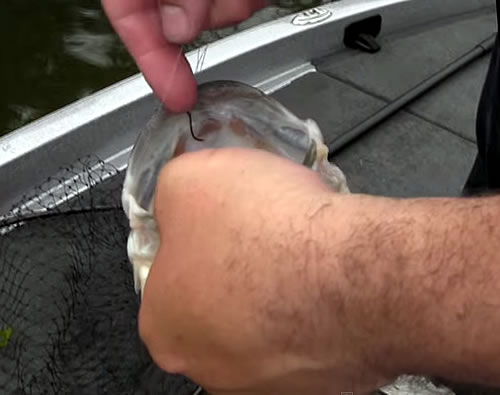 FINESSE DROP SHOT FISHING BASICS
FINESSE DROP SHOT FISHING BASICS
Fishing a finesse drop shot rig is very simple and in fact one of the best ways to work it is like a traditional Carolina Rig (Drag & Stop). I’d say that most of the time you’ll be dead-sticking. If you’ve never heard the term “dead-sticking” basically you are letting the lure sit still on a semi-slack line without trying to impart any action to the lure. So you cast it out, let it sink all the way to the bottom, reel up the slack until you have a slight bow in your line and pause(dead-stick) for about 10 seconds (count, it helps). Then drag the Drop Shot a foot or so and dead-stick it again. Repeat the process and feel for strikes. When you go to drag the Drop Shot, pay attention to how your line feels as you begin to take up any slack. If you feel any pressure “Set the Hook”! The nice part about setting the hook with a Finesse Drop Shot is that you don’t really “set the hook”… you “lean into the fish” with your rod. All you want to do is lift or sweep the rod and turn the reel handle. The hook does all the work. You just want to get a good bend in your rod by removing all the slack and applying pressure. You want to use a lighter drag setting when using the finesse drop shot rig because the hooks are very small and you don’t want them to tear out.
POWER DROP SHOT FISHING BASICS
If you are going to power drop shot fish, your approach is a little different. You’re using heavy gear, line, hooks and lures. You need to set the hook when power drop shot fishing the same as you would with a worm or jig (especially if you Texas Rig the lure). Remember that this technique is tailored for fishing around and in thicker cover like weeds, brush, docks, etc. If you are fishing isolated cover in water shallow enough to see your target (the cover), cast into and around the target and let the lure dead-stick for a few seconds (let’s say 5 seconds). You want to leave a little slack in your line. Then gently “Yo-Yo” the lure without lifting the weight off the bottom. So basically you want to softly lift the lure until you are about to feel the weight and then stop and let the lure fall again. You might repeat this process three or four times and then reel it in and make another presentation.
DROP SHOT GENERALITIES
Shaking your rod tip with a slight bend in your line will make your lure quiver and dance under the water. There are times when bass actually want the lure to move a little (especially during the spawn). Like all things, experiment to see what triggers a strike. Usually a shake, pause combination will do the trick.
Having some slack in your line is a good thing with this technique. Granted, you will not always feel a strike and most of the time your line will just get heavy. Pay Attention! Just like when you fish a weightless soft plastic, bass will often pick up the lure and swim away with it in their mouth. If they feel resistance they typically spit out the lure. Find the “happy median” and you’ll increase your hook up ratio drastically.
Water clarity and amount of fishing pressure will determine how light your line should be. Ultra-Clear lakes that receive a good amount of fishing pressure may require you to use as light as 4 lb test Fluorocarbon line. On another lake with water that is more stained, you might be able to use 6 lb test mono and have not trouble catching bass. A good starting point for finesse drop shot fishing would be 6 lb fluorocarbon. Unless you’re fishing under extreme conditions, you’ll be fine.
Different shaped weights are designed for different things, but for the most part the shape is not a critical part of the system. You can take a “nut” from the old tin can in your garage and tie it to the end of your line and still catch bass. If you know that you are going to be fishing a lake with tons of rocks/boulders and weeds but you might try using a cylinder type weight instead of a round weight. Or if you want to keep the drop shot rig in one place for a long time (during the spawn for example), you might choose a round ball drop shot weight that will sink straight to the bottom and stick a little. If you’re fishing suspended bass in open water, the weight shape doesn’t really matter too much.
The general bass fishing rule is “match the forage that bass are feeding on” for the particular lake you are fishing. This rule applies to drop shot fishing also. There are thousands upon thousands of soft plastics out there. Pick a few that match the forage in your area and start with those… you can always buy more later.
